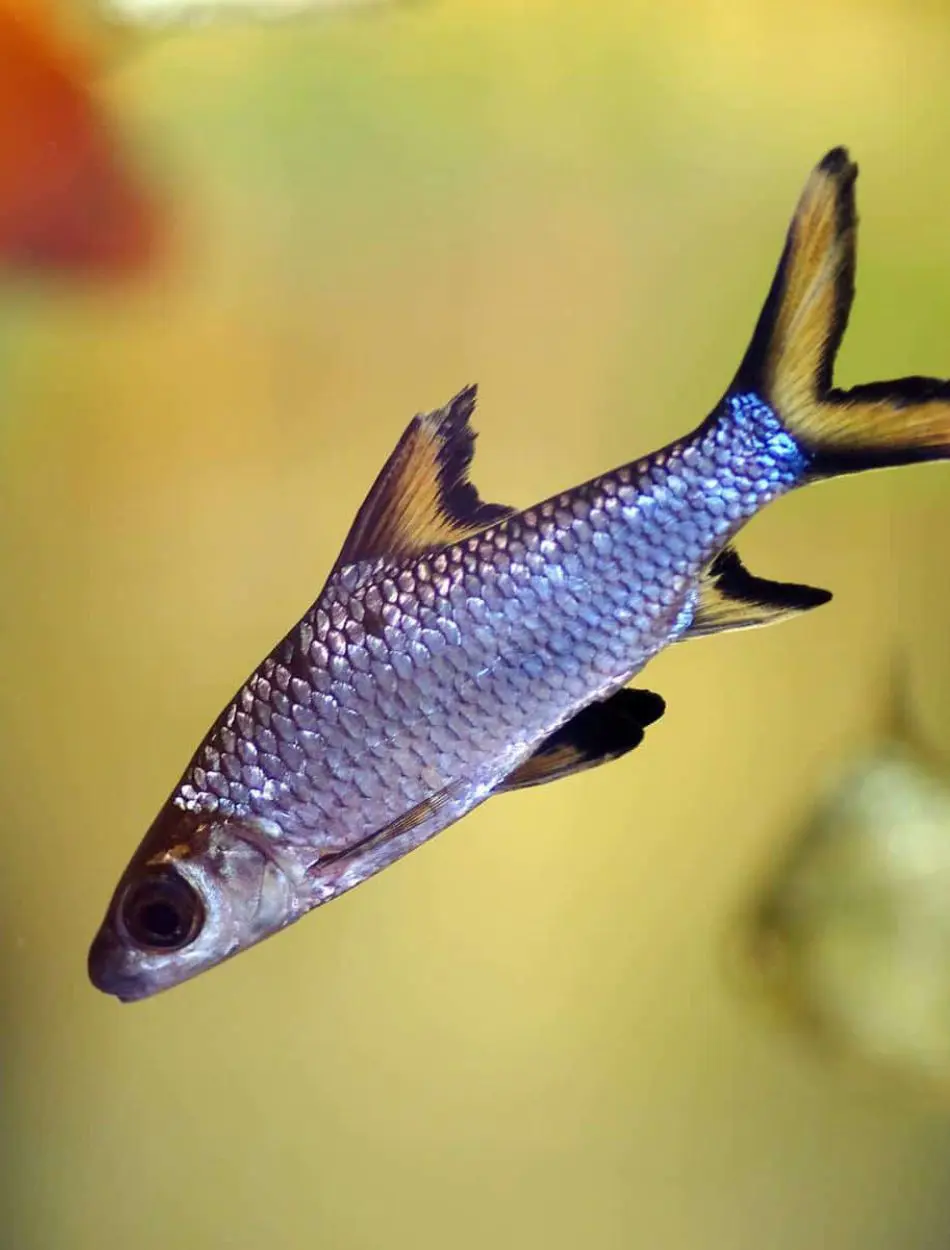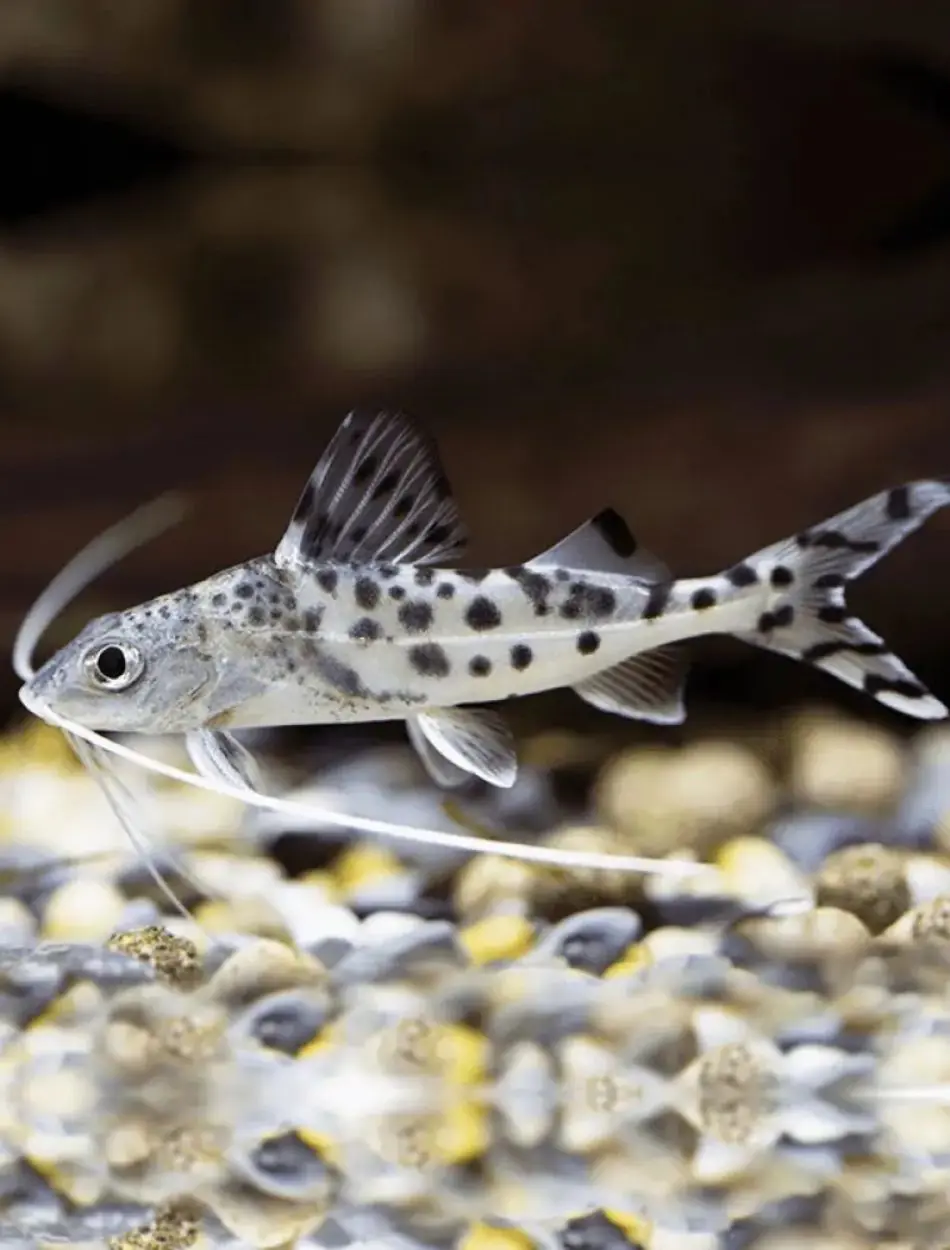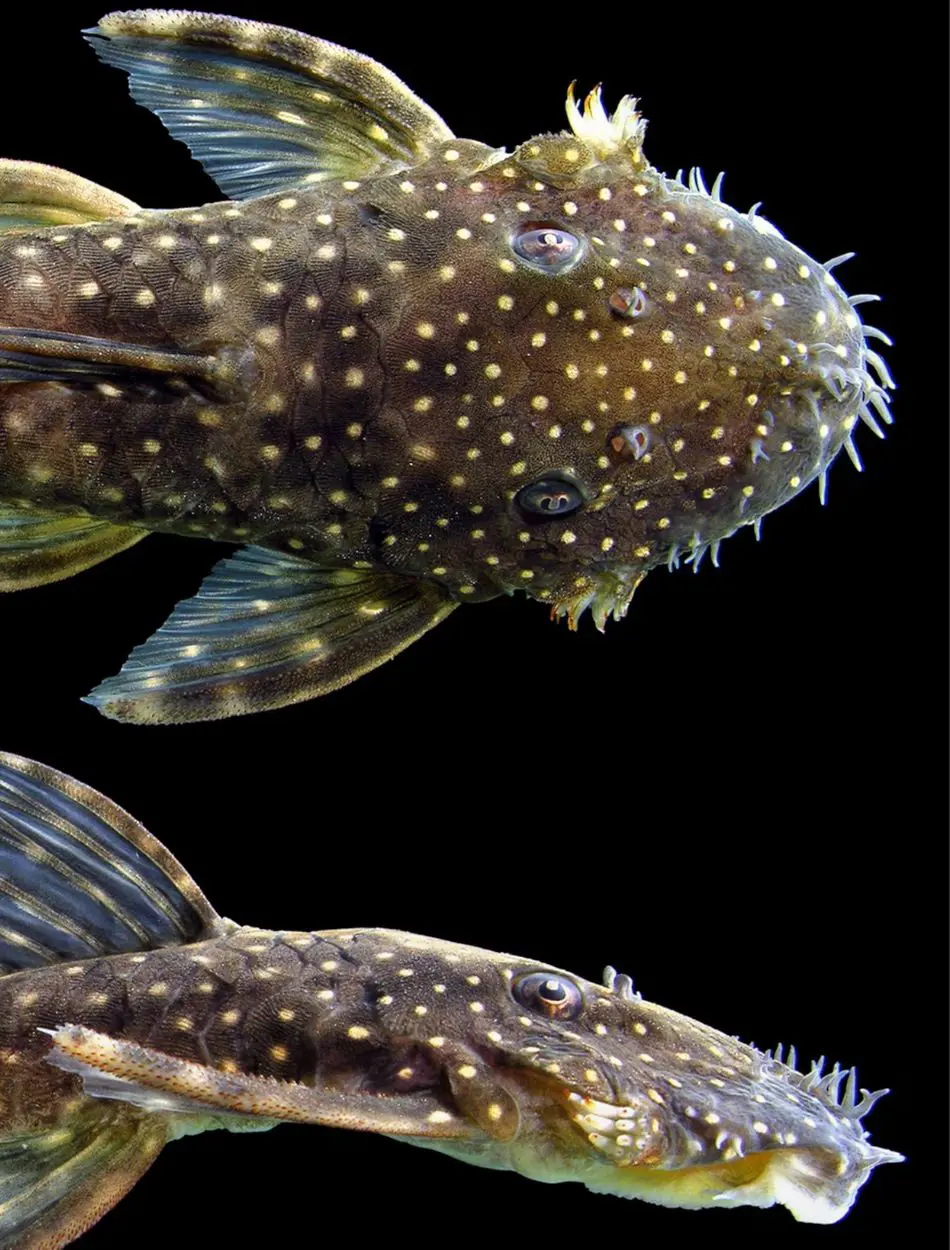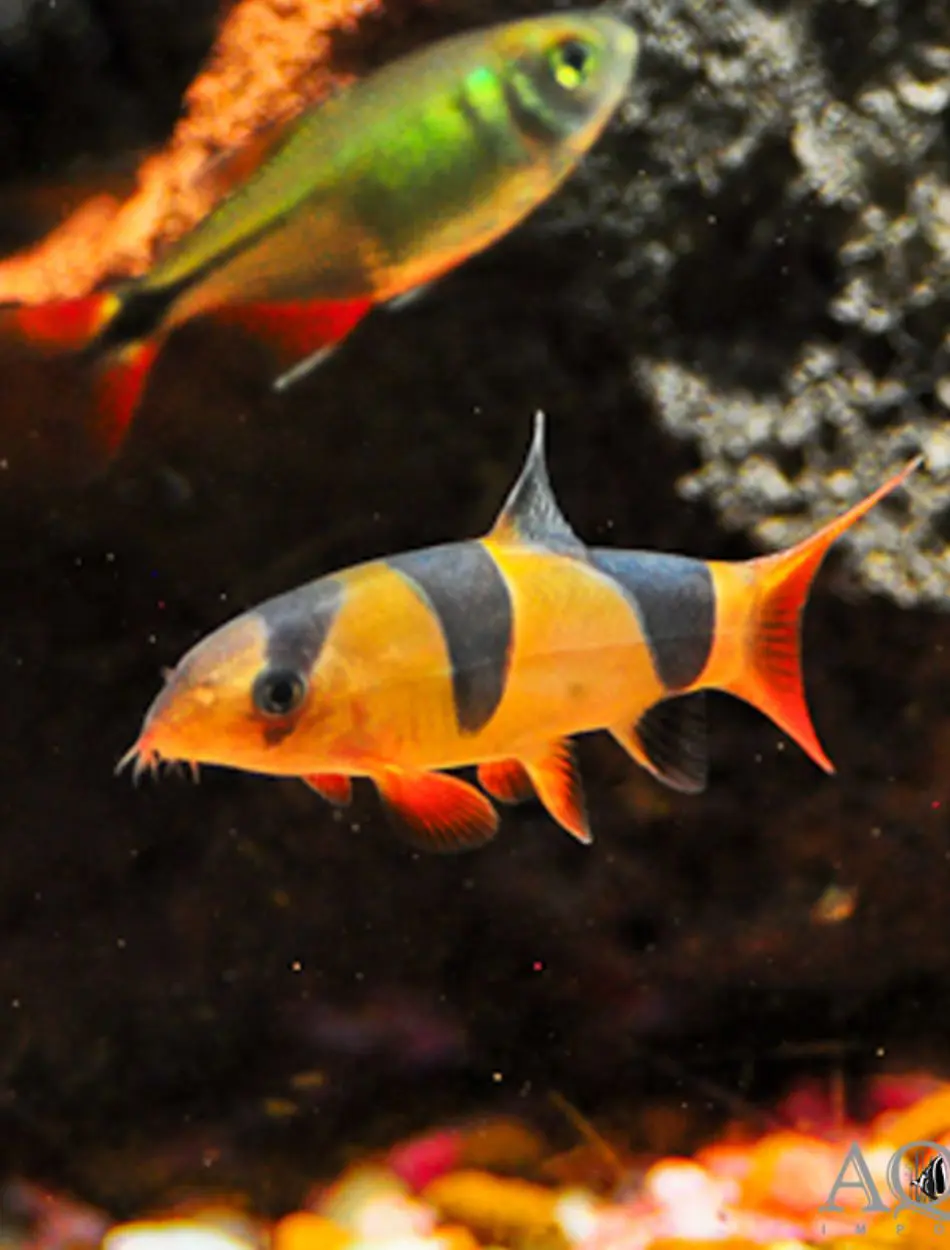Glass Catfish Care Guide And Tank Mates
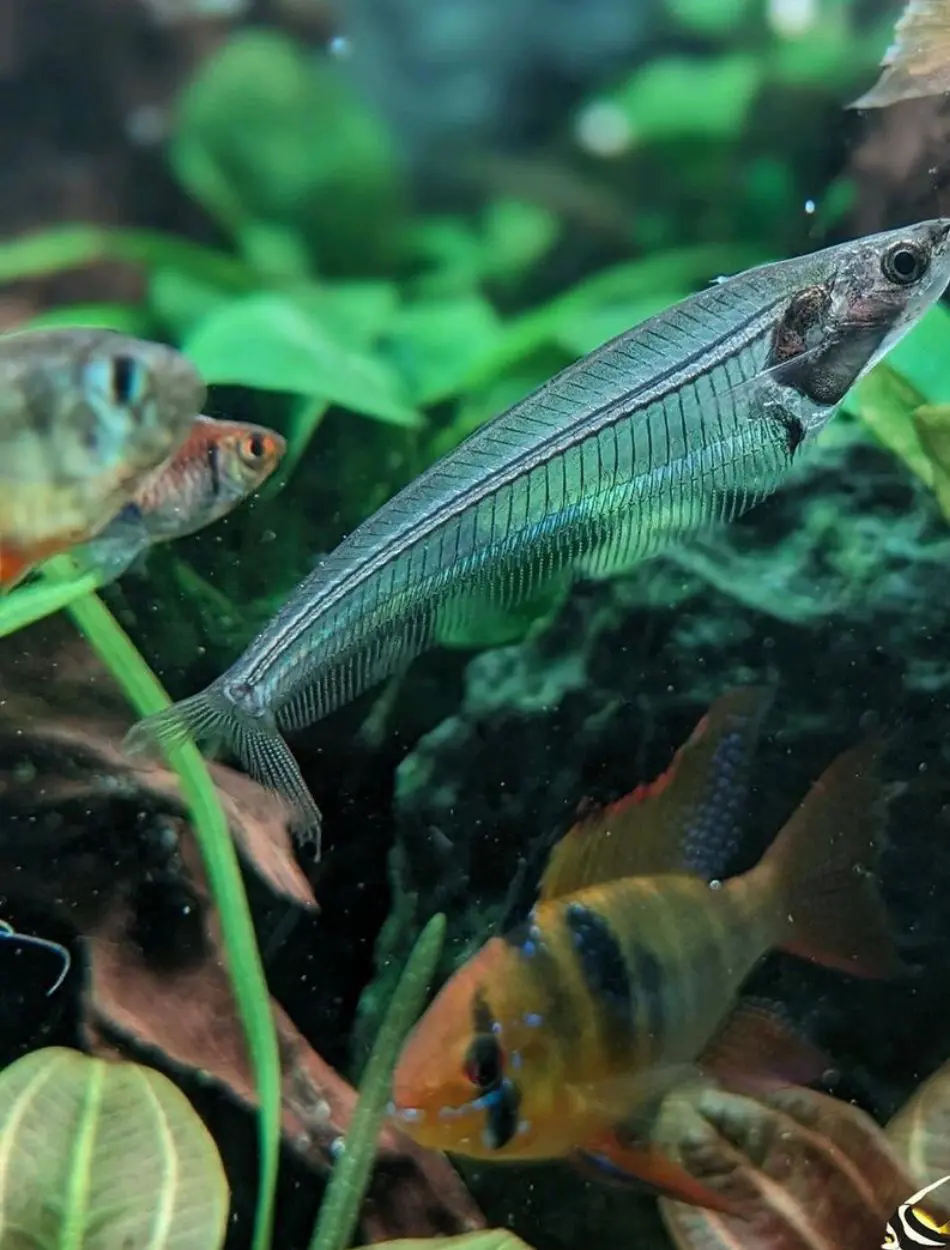
Glass catfish care makes for a very rewarding experience, as it allows one to host in a home aquarium one of nature's most unique and captivating creatures. While it is a little more work to care for these beautiful, peaceful glass catfish than for other typical freshwater species, it is well worth the effort.
With the right habitat, diet, and companions, your glass catfish will flourish in the requirements for them to achieve a long and healthy life. Whether for a seasoned aquarist or a new one, understanding the requirements of glass catfish and their tank mates aids in creating a harmonious, vibrant setting that accurately depicts the distinctive beauty of these remarkable transparent wonders.
Overview
- Scientific Name: Kryptopterus vitreolus (formerly known as Kryptopterus bicirrhis)
- Common Names: Glass Catfish, Ghost Catfish, Phantom Catfish, Transparent Catfish
- Lifespan: 5 to 8 years (with proper care, they can live slightly longer)
- Adult Size: 4 to 5 inches
- Temperament: Peaceful, timid, and social and prefers to be in groups (schooling fish). They are non aggressive and do well in community tanks with other peaceful species.
- Minimum Tank Size: 30 gallons (preferably larger if kept in groups, which is highly recommended for their wellbeing)
Traits and Characteristics

Ghost Glass Catfish are peaceful schooling fish and do best when kept in groups of at least five to six. Given the numbers to form a school, one will see fascinating social behaviors like synchronizing their swimming and schooling so tight that it will seem they are moving as one unit. These transparent bodies result in these schooling displays being even more attractive as they constantly display their inner organs and spine.
Physical Description
The Ghost Glass Catfish has an elongated, laterally compressed body, which is almost translucent, where one can view the internal structure from the outside. This translucency nature gives the fish an appearance of being very delicate as well as ghostly something truly unique in freshwater fishes.
A long thread like barbel hangs from its mouth, meaning it helps in navigating the dark by feeling. The fins are almost invisible and, with this transparency, give them their look again. The eyes are placed slightly forward of the body, giving it a slight, predatory look.
Behavioral Characteristics
They are extremely shy and sensitive fish and like the place to be dimly lit with a number of hiding spots. They are not at all aggressive and are very peaceful, hence quite suitable for keeping in community tanks. However, their rather timid nature makes them prone to very aggressive or boisterous tank mates, so they must be housed with very peaceful species.
They are well known for their peaceful nature and just swim and mostly already fixated in one place in the water, which makes them near impossible to see. They are known to inhabit water bodies with slow flow and behave accordingly to show that they like stable and stress free conditions.
Setting The Right Tank
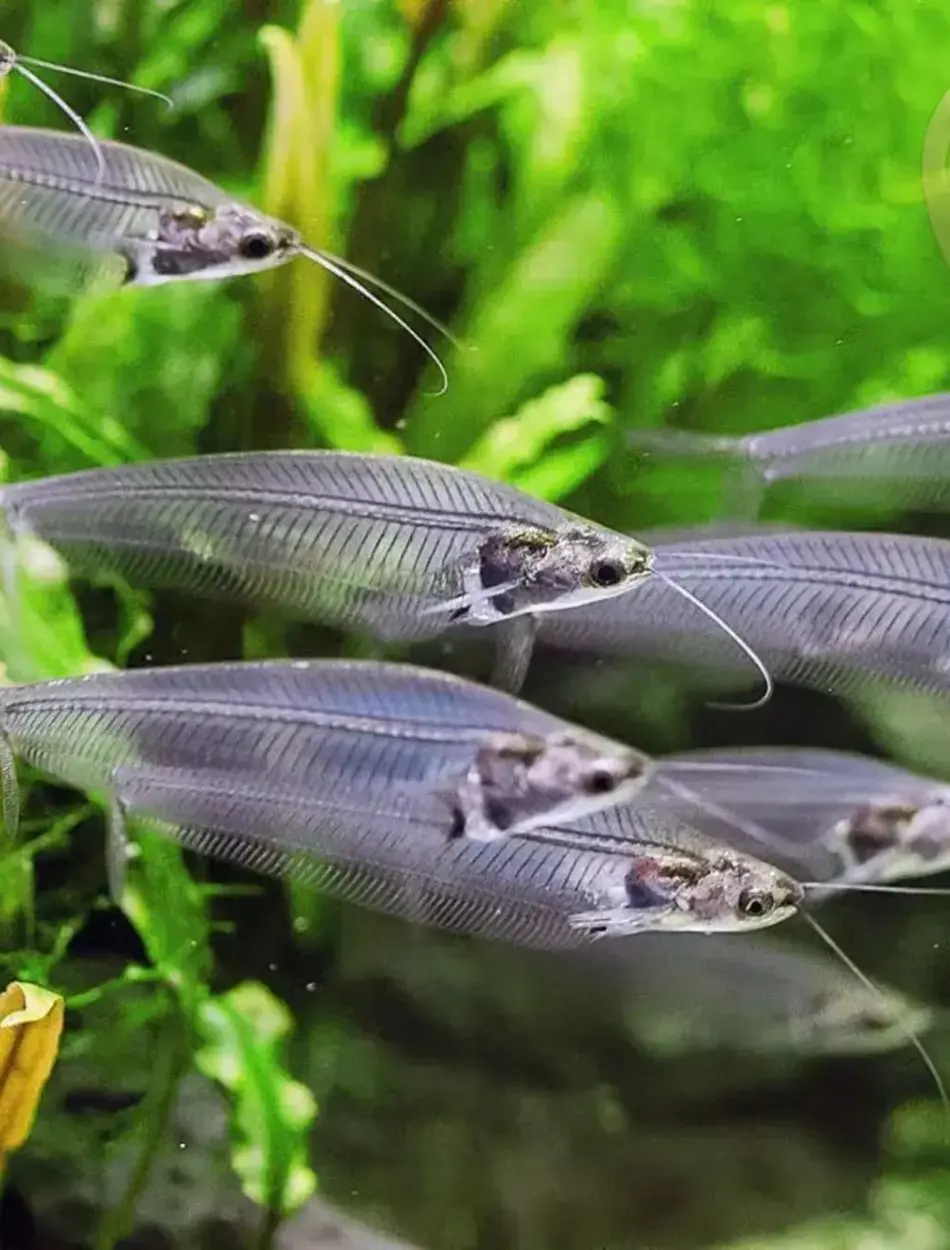
In nature glass catfish can be found in slow moving rivers and streams that are generally rich in vegetation. This is something one could try to mimic in an aquarium by attempting to replicate the water parameters found in their homeland.
Tank Size
Select a size that will be appropriate for having enough space for a school of glass catfish, because this is a schooling fish and should be kept in groups of at least five or six. They need an absolute minimum of a 30 gallon tank, and larger is more comfortable not just for their number, but in order to provide plenty of swimming space.
Water Parameters
Glass Catfish like stable water conditions similar to their natural habitat and prefer soft water, which is slightly acidic to neutral in pH with a value of 6.5 to 7.0, at a temperature of 75°F to 80°F, and from 24°C to 27°C.
These fish prefer well oxygenated waters with a slow to moderate current, such as can be found in slow moving streams and rivers where they originate. Regular water changes and a good filtration system are important in keeping the levels of ammonia, nitrite, and nitrate low, for Glass Catfish are very sensitive to poor water quality.
Tank Setup
The tank should be well-decorated with plenty of plants, rocks, and driftwood. This is not only to provide hiding spots but also to grow algae on the surfaces. But also make sure there is a good open swimming space.
These are very active fish and love to boom around the tank. Keep a sandy or fine gravel substrate as these fish love to forage along the bottom. Since they are originally from streams with slow flow, a good filtration system that can create a gentle current is necessary to simulate their natural environment.
Feeding Habits
Some believe that feeding glass catfish can become a little more demanding compared to the majority of freshwater fish because of the fact that they are rather finicky eaters by large with a strong preference for live and frozen foods.
Diet In The Wild
These glass catfish in the wild feed on small insects, larvae, and other tiny invertebrates in the slow flow areas of rivers and streams across Southeast Asia. The food almost exclusively consists of live food, which they hunt actively by the developed sense of feel and taste, aided by the sensitive barbels that extend from their mouth.
Their natural diet provides high protein levels needed both for growth and energy, and it is quite unrealistic to duplicate these dietary habits in captivity, if health and vitality are to be maintained.
Feeding In The Aquarium
In an aquarium, these glass catfish will do well with varied feeding that comes as naturally to them as possible so live or frozen foods should therefore be offered in order to satisfy their nutritional demand. Feed them high protein foods like bloodworms, brine shrimp, and daphnia processes readily taken up and relished.
Though they can sometimes take quality flakes or pellets, these should be supplemented with live or frozen foods for a balanced diet. Food should also be provided in small portions two to three times a day, with any leftover food removed as soon as possible to maintain water quality and prevent undue stress.
Feeding Schedule
Establishing a regular pattern of feeding is very critical to glass catfish. In addition, it helps the fish maintain their energy and keeps them out of stress. Feed your catfish two to three times a day in small portions so that they have enough time to eat the food before it reaches the bottom or is swept away by the current.
Since glass catfish are diurnal, feeding them during the daylight hours will definitely reflect natural behavior. Feeding at the same time of day keeps them not only healthy but allows them to be on schedule which helps bring about stability in an aquarium environment.
Understanding Glass Catfish Sociology
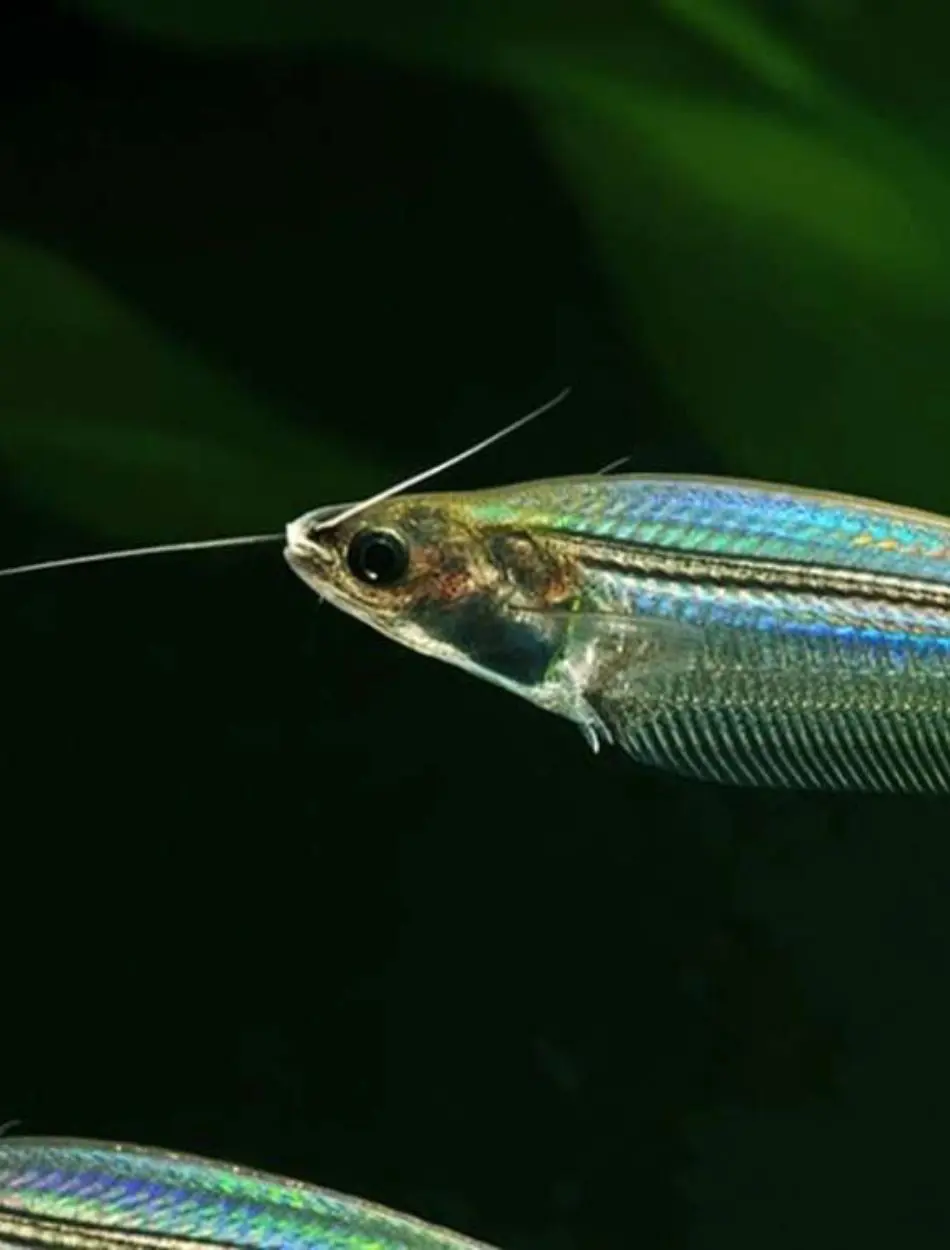
These types of fish are very social and do well with their own kind. Therefore, keeping them in groups is important rather than singly. In the wild, they are discovered really far from any schools several tens of them roaming in one location give a feeling of security and reduced stress.
If maintained in a school, they are more likely to develop natural behaviors such as schooling and swimming in sync. It indeed is an amazing view that gets created if the aquarium is maintained well.
But then, it is very important not to crowd them in small spaces, or else there may arise problems of a territorial nature. You might also consider introducing other nonaggressive species to the tank, as this would be good in terms of having a dynamic and interesting environment for your glass catfish.
Ideal Tankmates
Only add species compatible with the water temperature, pH, and hardness requirements of your glass catfish, and also ensure they are non-aggressive species in nature. Glass catfish are not aggressive and are easily frightened, so do not combine them with larger or more boisterous species that can cause them to be intimidated or outcompete them for food.
Good tank mates for glass catfish would include small to medium sizes of other peaceful species that share similar water conditions and have a calm demeanor, such as neon tetras, harlequin rasboras, and cherry barbs.
With these habits, both Corydoras and the glass catfish will not adversely affect the other, since the two do not meet at the bottom foraging grounds of the tank. Small peaceful gouramis, like the honey gourami, will also be ideal since, besides adding color and interest to the tank, they are not a threat to the glass catfish.
Incompatible Tankmates
Glass catfish themselves are really peaceful and amicable with a wide variety of species, although there are indeed fish that are better avoided either because of their aggressive or territorial nature.
Examples of species that may be particularly threatening toward the glass catfish are cichlids, especially the larger, more aggressive types, for they will most probably bully or even hurt them. Inequalities will also result between glass catfish and large predatory fish, such as angelfish, or larger barbs that can outcompete for food and space, leading to stress and eventual sickness.
Also, avoid keeping them with fin-nipping species like the tiger barb, which will cause stress and injury to the delicate fins of glass catfish. Always research the compatibility of potential tankmates before adding them to the tank, and monitor the early interactions of the fish keenly to ensure that they live together harmoniously.
Breeding Glass Catfish

Breeding glass catfish in captivity can be quite challenging and requires careful observation of factors such as water conditions, diet, and environment. Although glass catfish can be bred in a home aquarium, it is not very common because their spawning process requires very specific conditions.
Breeding Conditions
In the wild, glass cats will typically spawn not long after the beginning of the rainy season which brings with it higher water levels and cooler temperature changes from the slight drop these types of systems experience which sets off breeding behavior.
You can simulate these conditions in the aquarium by gradually reducing the temperature of the water by a few degrees, with frequent water changes conducted to simulate the addition of fresh water. A diet that is very rich in proteins, whether the source is live or frozen will also help to condition these fish for breeding.
Spawning Behavior
If successful, the female will deposit her eggs onto the underside of broad leaves or other flat surfaces, which the male will then fertilize. These eggs will hatch within 24 to 48 hours, and the fry will feed on infusoria or other types of microscopic foods until they are large enough to accept larger foods.
Common Health Issues
Unlike many sensitive species, glass catfish are susceptible to only a few illnesses, especially if the needs of their environment are well-catered for. Stress can actually be behind most health problems faced by your glass catfish through bad water quality, unsuitable or even aggressive tank mates, or sudden changes in water conditions.
Ich
Ich is a very common parasite infection that will appear as small, white spots on the body, fins, and gills of the fish. These fish are quite prone to Ich if they have been previously stressed or if it has been kept in poor water conditions. In relation to this, it is important to prevent ich and other diseases by creating clean conditions in the water and establishing regular changes in the volume of water.
Internal parasites
These fish are sometimes attacked by internal parasites and produce symptoms like wasting away lethargy, and loss of appetite. Specific disease agents have to be given in a full targeted treatment in the form of medicated foods or water treatments.
Bacterial Infections
Bacterial infections can occur due to poor water conditions, wounds, or stress. Symptoms may include ulcers, reddening streaks on the skin, or erratic swimming behavior. Use broad spectrum antibiotics to treat bacterial infection.
Fungal Infection
Poor water conditions in glass catfish can further support the cause of fungal infections by fungi such as Saprolegnia. Commonly, fungal infections appear as white, cotton-like growths all over the body or fins of the fish.
The measure of isolating an infected fish is very important to prevent the spreading of the fungus throughout the rest of the aquarium when treating fungal infections. Treatments involve treating the fish with antifungal medication designed to treat the infection. Moreover, enhancing the hygiene of the tank will help alleviate the root cause of the problem to its furthest end and allow all the fish to live under much healthier conditions.
Ethical Considerations

These are a very social species and will relate well in numbers so keeping them in isolation or in numbers too low to enable meaningful interaction might stress them out and bring problems to their health. It's a must to always remember these fish are maintained in a community and have enough swimming space and foraging.
Keeping glass catfishes ethically means that these conditions include a well maintained and spacious tank reflecting their natural habitats in terms of both water and social conditions. The fish do well in groups and require a varied diet. Regular monitoring for health and, where any signs of illness are seen, treatment is crucial to prevent suffering.
Moreover, it means that sourcing glass catfish should be from good breeders who truly are into humane breeding practices, and are giving enrichment within the tanks. This will engender respect for the glass catfish, showing that they care about the animal's welfare and humane treatment.
Top Lists

